Author: Dr. Koen Deloose
Institution: Head of Vascular Surgery, AZ Sint Blasius Hospital, Dendermonde, Belgium
Summary
This presentation discusses a range of treatment strategies for thrombotic lesions and in-stent restenosis (ISR). Dr. Deloose examines the efficacy of different techniques for managing thrombosis and restenosis, including endarterectomy, thrombus aspiration, drug-coated balloons (DCB), drug-eluting stents (DES), and atherectomy. The study highlights that complex lesions (Tosaka III) particularly benefit from a combination of therapies to achieve optimal outcomes.
Classification of Thrombotic Lesions and Treatment Techniques
• Acute Limb Ischemia (ALI) Lesions: Characterized by heavy thrombus burden, treatment options include intra-arterial thrombolysis, endarterectomy, thrombus aspiration, and surgical thrombectomy.
• Chronic Heterogeneous Lesions: For complex lesions like ISR and reocclusions, DCB and DES are recommended in combination, with considerations for stent remodeling and increased stent thickness to prevent smooth muscle cell (SMC) and inflammatory cell proliferation.
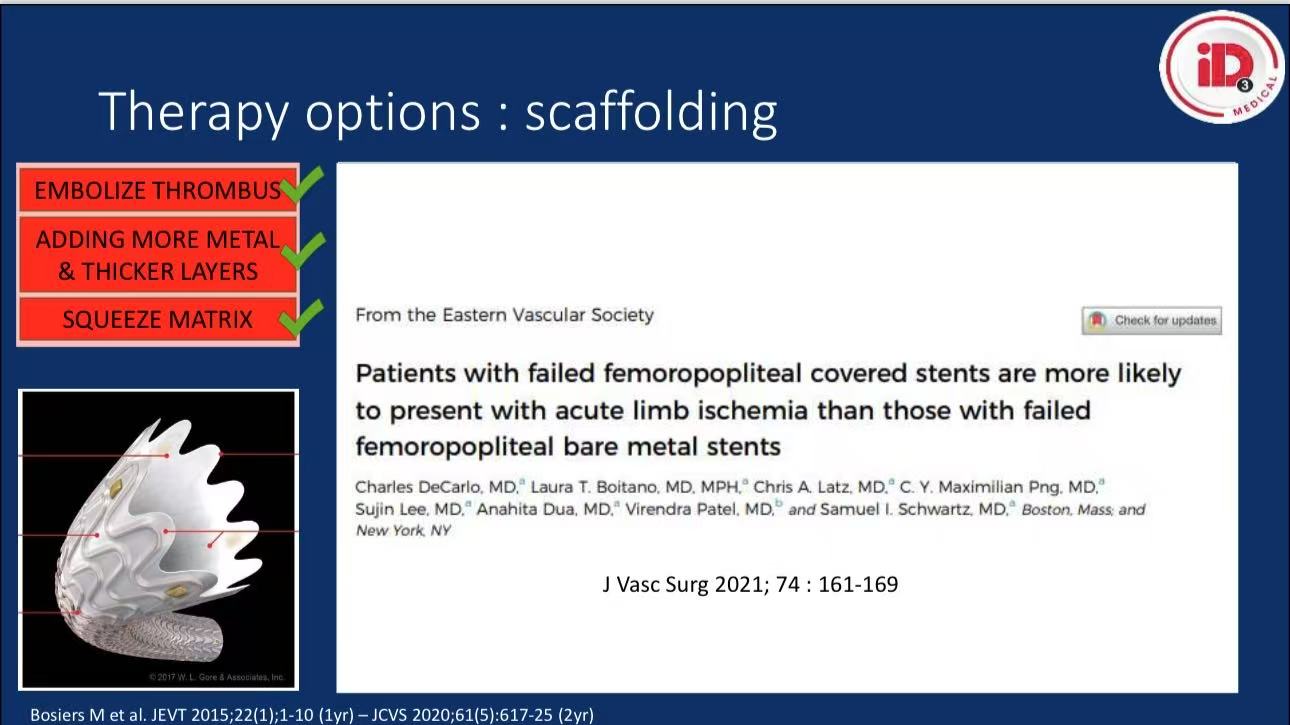
Efficacy Comparison of Various Treatment Techniques
• DCB and DES: One-year follow-up shows target lesion revascularization (TLR) rates of 88.7% (DCB) and 78.8% (DES), indicating the significant effectiveness of drug-coated technology in reducing restenosis.
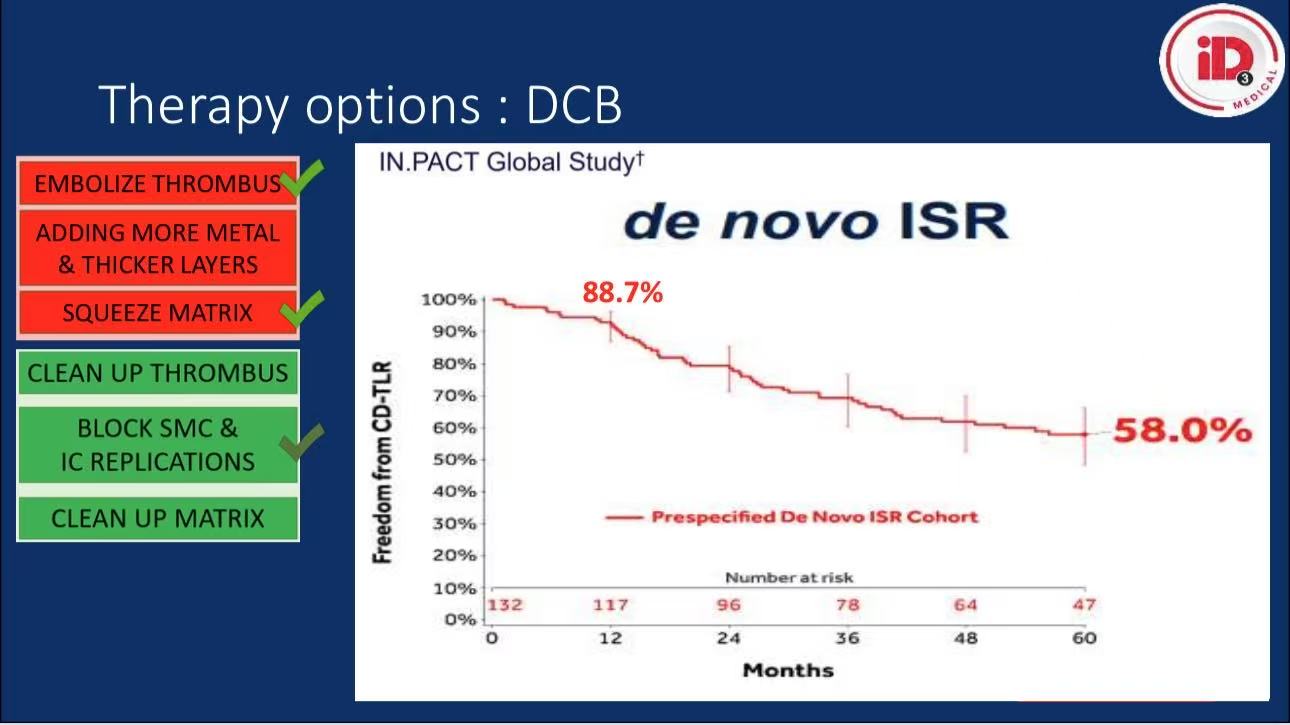
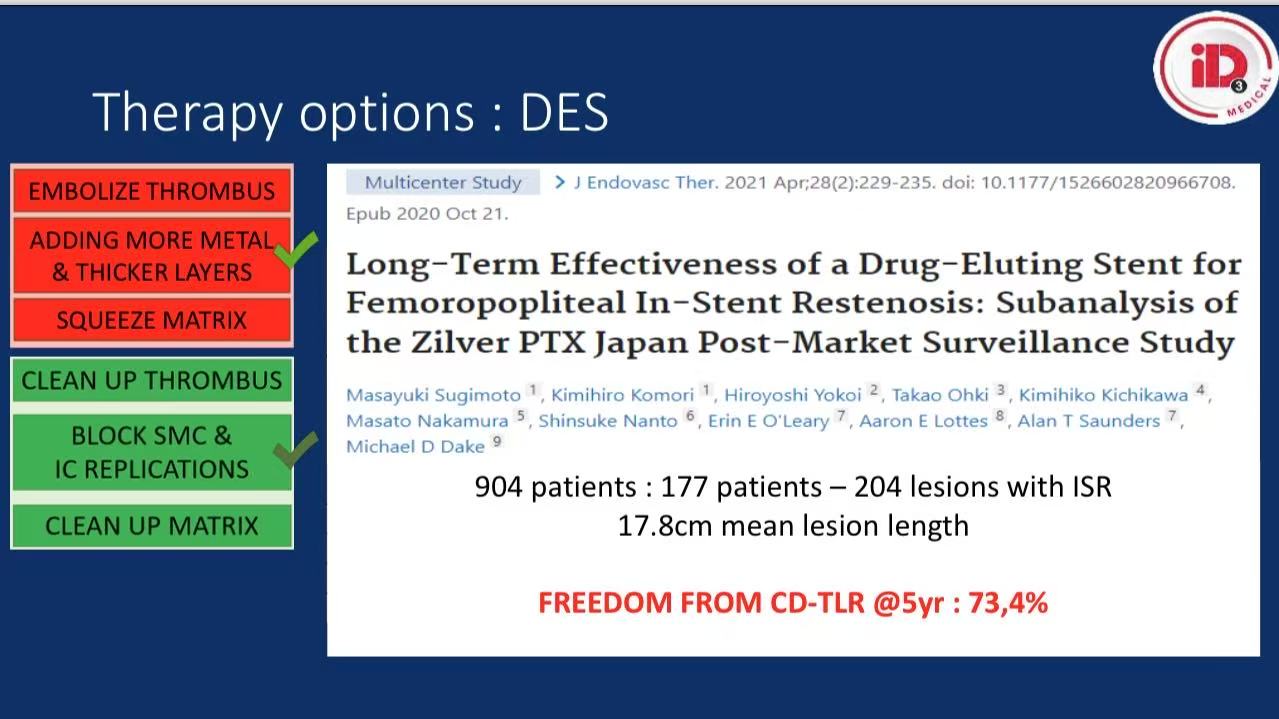
• Atherectomy: Techniques like directional and laser atherectomy show favorable standalone results but are limited in complex ISR cases. They are recommended in combination with anti-restenosis technologies to improve long-term patency rates.
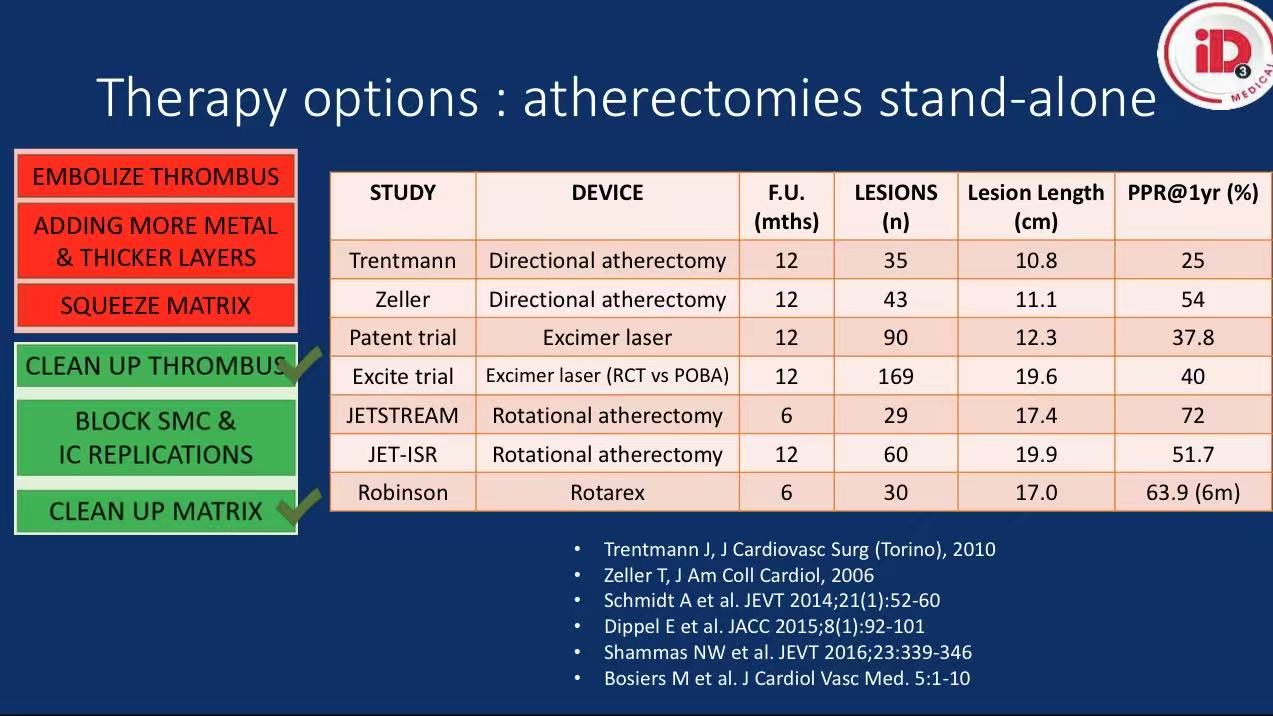
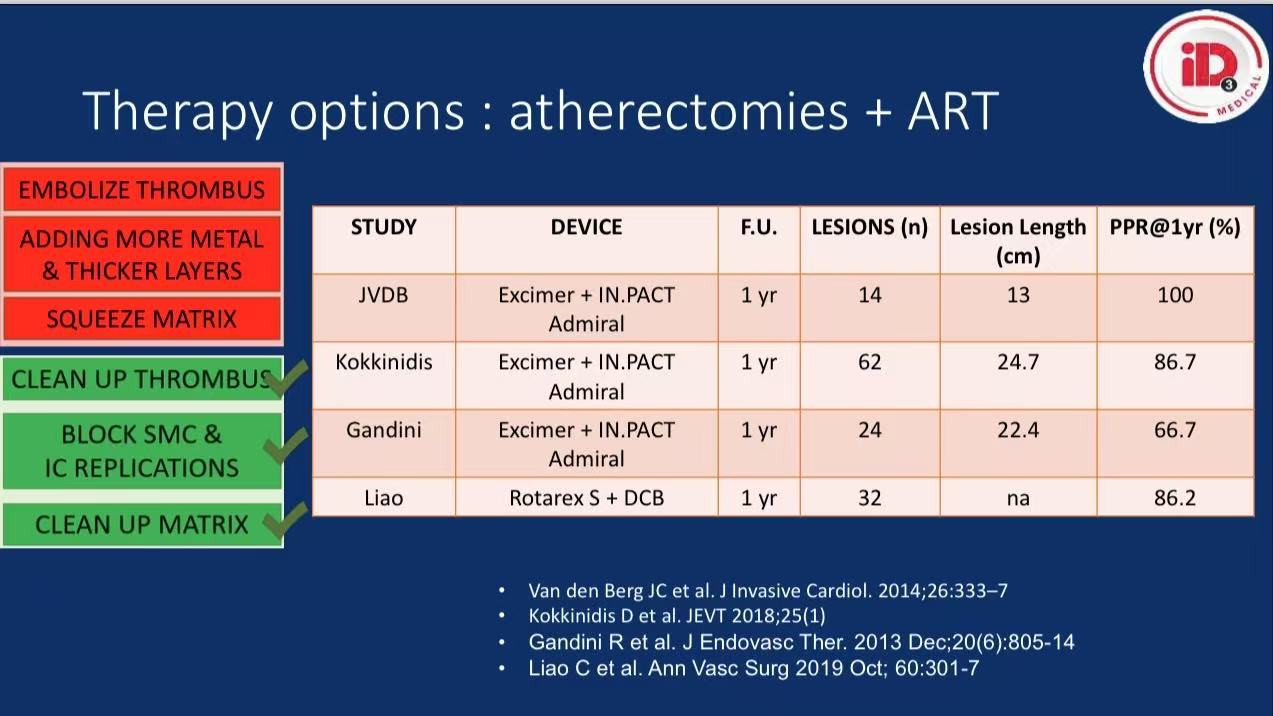
Case Analysis of Treatment Strategies
• Case Example: In a severe ISR case, treatment with Rotarex S combined with DCB achieved satisfactory blood flow restoration, with no TLR observed within six months post-procedure.
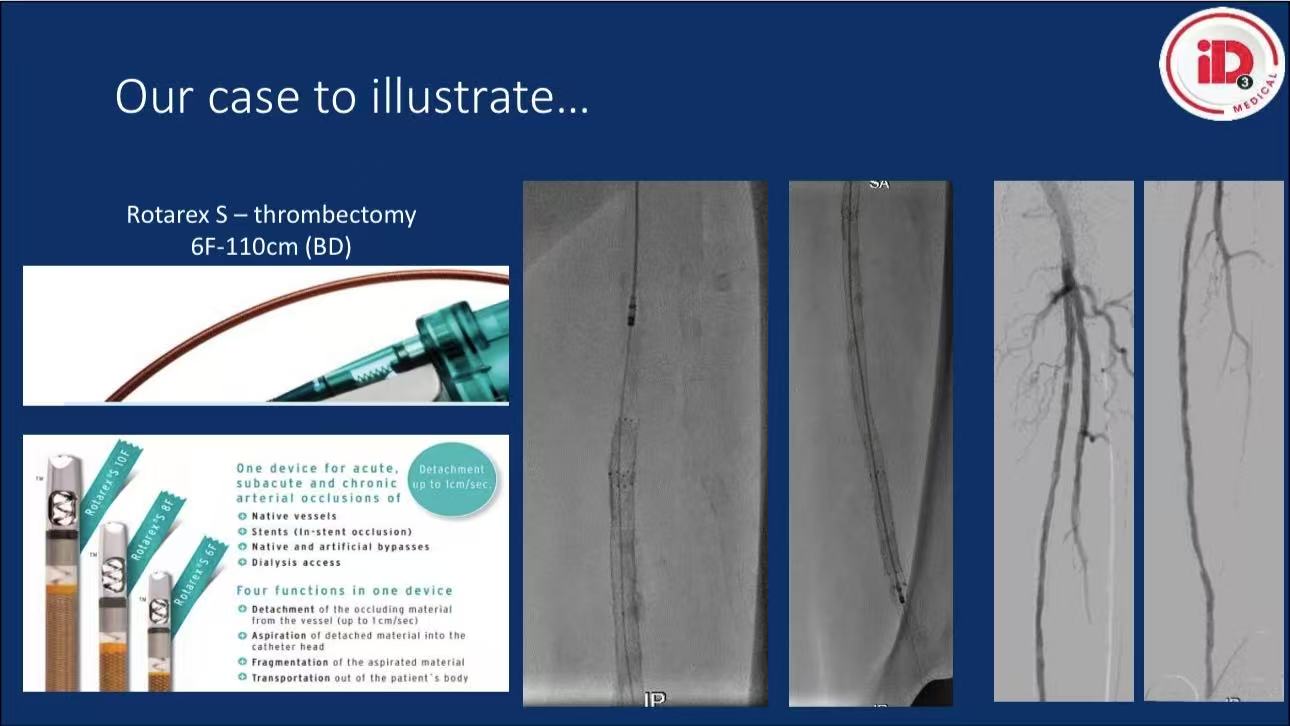
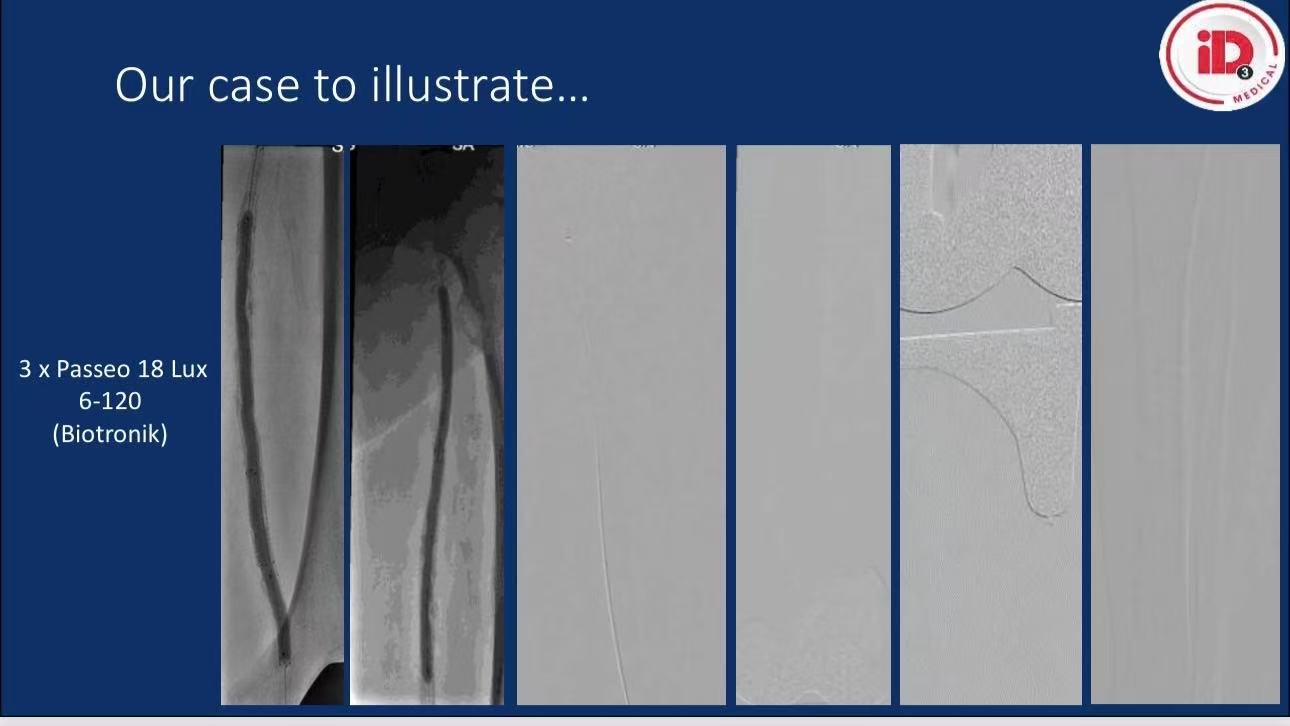
Conclusion
1. Complex thrombotic lesions (e.g., ISR) require a combination of techniques such as endarterectomy, DCB, DES, and atherectomy for optimal outcomes.
2. Preliminary studies support the combined use of intra-arterial atherectomy and anti-restenosis technologies, effectively enhancing patency rates in complex lesions.
3. Future research should focus on optimizing multi-therapy combinations to further reduce restenosis rates.
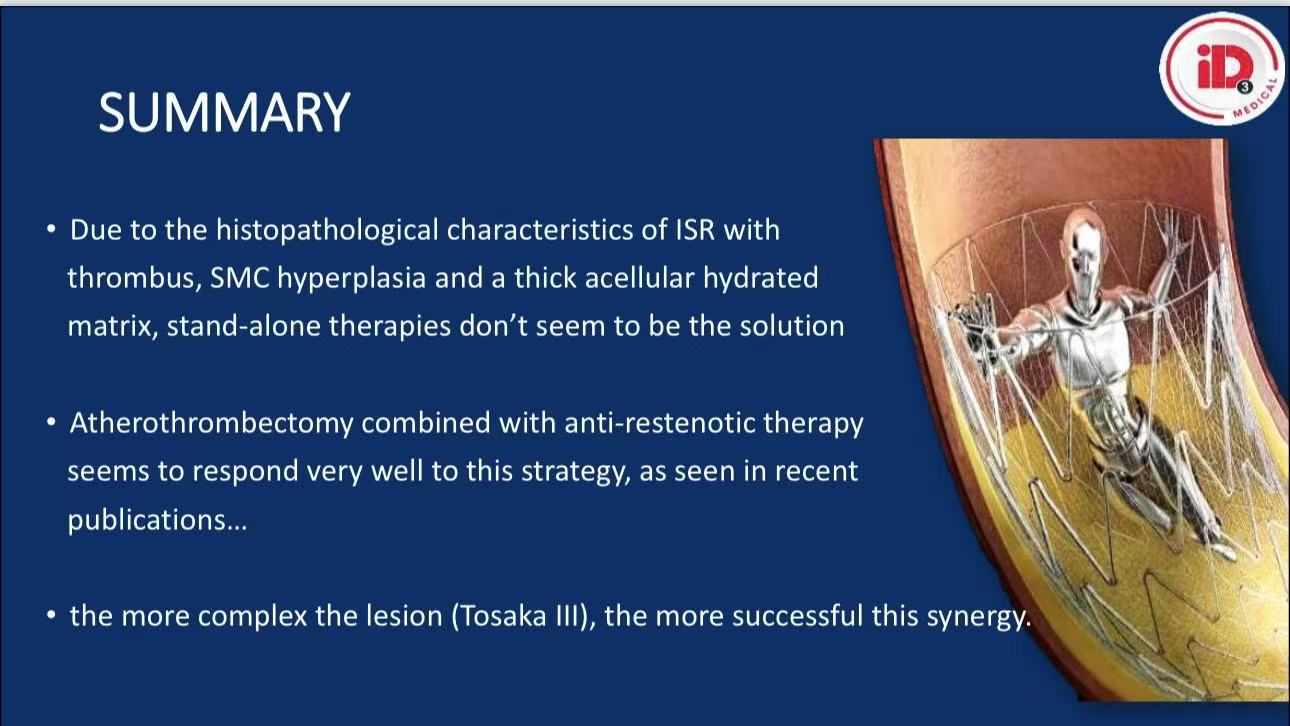
Contact Us
• Email: endovascluar@simtomax.cn
The English content has been synchronized with the Vasco Knight account. For more international information, please visit:
• www.vascularknight.com
• Facebook: Vasco Knight
• Instagram: knight_vasco
Let’s safeguard health together and showcase your brilliance to the world!


